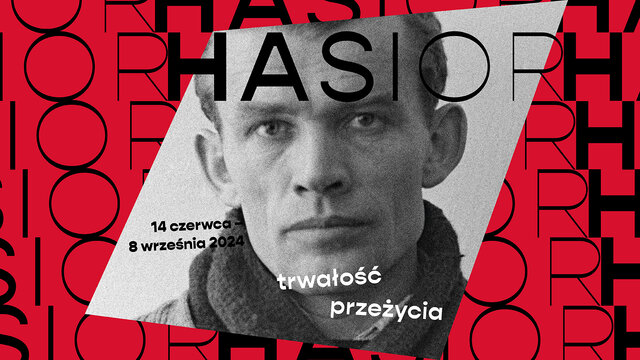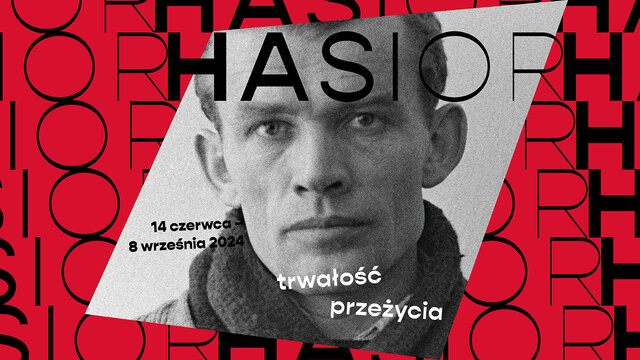Hasior. The Persistence of Experience
From 14 June, visitors to the Royal Castle in Warsaw may see the most outstanding from among the currently available works by Władysław Hasior – a contemporary classic whose art is an eloquent testimony to the existential experiences and artistic explorations of the 20th century, The Hasior. The Persistence of Experience exhibition comprises all forms of expression so characteristic of the artist – assemblages, banners and concrete sculptures cast in the ground.
The nearly 90 exhibits have been borrowed from Polish museums and private collectors, and in terms of their form and content showcase Hasior’s artistic explorations in the broadest scope possible. The themes of the works selected reflect generational traumas (including those brought upon by the wars), mechanisms of social oppression, relations between man and nature, the individual and the mass, the sacred and the profane, that which remains universal and that which passes locally, creating a fascinating and profound discourse on human condition, yet at the same time drawing from the most significant cultural texts.
“By presenting contemporary art, we wish to increase the number of people interested in the Castle. We ourselves are also curious how contemporary art presents itself in these historic interiors. Opened at the end of the 50th anniversary of its reconstruction, the exhibition of Hasior’s works refers to the artist’s very first exhibition organised still within the bare walls of the newly-rebuilt Castle back in 1974, which, contrary to all previous aesthetic assumptions in art, was full of drama and highly aggressive” – says Prof. Wojciech Fałkowski, Director of the Royal Castle in Warsaw.
Hasior’s areas of artistic interest often overlapped with topics currently highlighted by the mainstream philosophical, social and political discourses, such as ecology (an attempt to transcend the anthropocentric perspective) or the folk roots of the Polish community.
Władysław Hasior’s works speak their own language. By making non-obvious but thoughtful juxtapositions of material objects, ready-made or slightly processed, he gave them secondary meanings, weaving them into overarching semantic constellations. Significant here is not only the object itself, but also its shape, colour and all the characteristics of the material from which it was made.
“Hasior did not attach particular importance to the durability of his pieces; he found it only natural that they were to slowly deteriorate. He did strongly emphasise, however, that it was the permanence of experience that was to be seen as most important both for his art and for its reception. We assumed that it would be a good title that accurately describes Hasior’s artistic attitude” – says Katarzyna Rogalska, exhibition curator, Royal Castle in Warsaw.
Hasior allowed some randomness to play an important role in the process of creating a sculptural form from scratch, with the results achieved oftentimes becoming either a surprise or a discovery for the artist himself. Despite the momentum of his ventures, however, he did not at all pretend to be a demiurge exercising full control over the creative process. More importantly, his works seek a dialogue with the museumgoer, allowing natural factors, for instance in the form of an element, to make themselves known. The ethical dimension of such an attitude truly does resonate with our contemporary sensibilities, which is also why Władysław Hasior doubtless needs to be counted among the artists forever worth rediscovering.
“The Persistence of Experience exhibition comprises image-like assemblages and banners. They are the essence of Hasior’s body of work. These pieces are intuitive and easily recognisable, which is why they are often associated with him. They are an outstanding and by no means local or parochial outburst of talent, expression and deeply humanistic message,” – emphasises Jacek Chromy, script’s authorand exhibition curator.
The exhibition comprises objects borrowed from Dr Tytus Chałubiński Tatra Museum in Zakopane (partner of the exhibition), the Municipal Art Centre in Gorzów Wielkopolski, the National Museum in Poznań, the Teresa and Andrzej Starmach Collection, Jacek Malczewski Museum in Radom, the Art Museum in Łódź, the Museum of Architecture in Wrocław, the National Museum in Wrocław, as well as from private collections (including the Chapel of All the Faithful sculpture from the collection of Prof. Andrzej Szarek).
The exhibition, itself organised as part of the celebration of the 50th anniversary of the reconstruction of the Royal Castle, is accompanied by a programme of online lectures devoted to selected areas of Władysław Hasior’s art. Moreover, a diverse educational offer has also been prepared. Adults may participate in meetings with curators and educators, including a joint tour of the Persistence of Experience exhibition and a meeting from “An Hour with Art” series devoted to the artist’s body of work. Families with children may participate in creative classes with elements of an art workshop entitled Mr Hasior’s Magical Chest and other artistic activities during which educators will talk to the youngest about selected topics related to assemblage making. Holiday camp and summer play centre groups may, in turn, engage in artistic workshops entitled Collages and Assemblages or something out of nothing, which will transport children to the magical world of Władysław Hasior’s art.
For the comfort of all visitors, especially those highly sensitive to environmental stimuli, quiet hours will be included on designated dates listed on the Castle’s website during the Persistence of Experience exhibition. Museums worldwide are increasingly introducing this facility.









